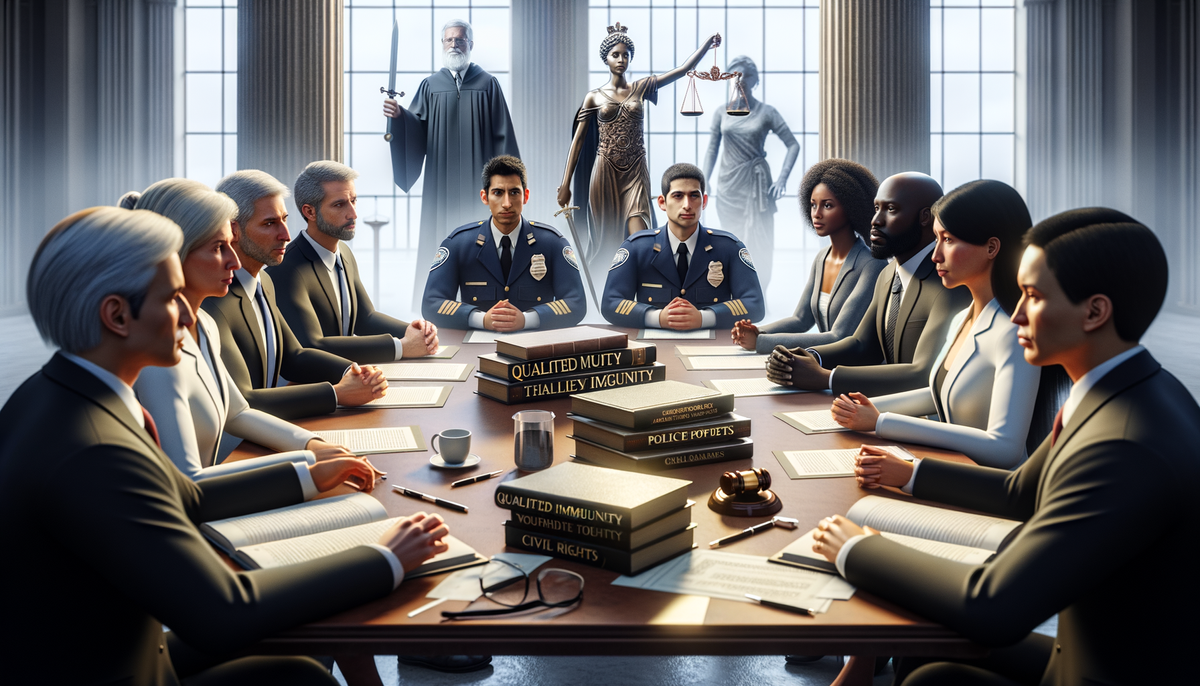Exploring Qualified Immunity: Current Challenges and Reform Efforts
Explore the complexities and ongoing debates surrounding qualified immunity and its impact on civil rights in the U.S.

Exploring Qualified Immunity: Current Challenges and Reform Efforts
What is Qualified Immunity?
Qualified immunity is a legal doctrine in the United States that shields government officials, including police officers, from civil lawsuits for damages related to constitutional violations, as long as the official did not violate “clearly established” statutory or constitutional rights that a reasonable person would know about. This doctrine primarily applies in cases alleging misconduct, including excessive use of force or wrongful convictions.
Key Features of Qualified Immunity
Legal Definition and Application: Qualified immunity protects government officials performing discretionary functions from being held personally liable in civil court for actions taken on the job, unless they violated rights “clearly established” in prior case law. It does not shield the government entity itself from lawsuits, but only the individual official. It is not absolute immunity; it only protects those who made reasonable, even if mistaken, judgments about unclear legal issues. It does not protect those who are “plainly incompetent or those who knowingly violate the law.”
How It Works
In practice, a plaintiff typically brings a suit under the Civil Rights Act of 1871 (Section 1983), claiming a violation of rights by a government official. The official can invoke qualified immunity as a defense. If the courts determine the law was not “clearly established,” the suit is dismissed, often before trial or even before discovery. The core question is whether a hypothetical reasonable official in the same position would have known their actions violated the plaintiff’s rights, considering the law at the time of the incident—not changes in law since then.
Who Is Covered?
Qualified immunity covers most executive branch officials, particularly law enforcement. Judges, legislators, and prosecutors often have other forms of immunity, such as absolute immunity, rather than qualified immunity.
Historical Background of Qualified Immunity
The doctrine was first formally established by the U.S. Supreme Court in Pierson v. Ray (1967), during the Civil Rights Movement. Originally, it was intended to protect government officials from frivolous litigation and financial liability when acting in good faith in ambiguous legal situations. However, starting around 2005, courts began applying it increasingly in cases of alleged excessive force or police brutality, leading to criticism that it often prevents victims of official misconduct from seeking justice, even when their rights have been violated.
Criticisms and Impact
Critics argue that qualified immunity sets an unreasonably high bar for plaintiffs: unless there is a prior court case with nearly identical facts, officials are usually protected. This requirement makes it exceptionally difficult for victims of official misconduct to recover damages, even in clear cases of constitutional rights violations. The doctrine has been widely criticized for enabling officials, especially police officers, to escape accountability for misconduct, including wrongful arrests and use of excessive force. Some legal and civil rights groups contend that the doctrine “has become a nearly failsafe tool to let police brutality go unpunished and deny victims their constitutional rights,” according to a 2020 Reuters investigation.
Ongoing Debate and Reform Efforts
The qualified immunity doctrine is the subject of considerable debate among lawmakers, the judiciary, and the public. Critics, including the NAACP Legal Defense Fund and the Innocence Project, have pushed for reform or abolition, arguing it undermines civil rights protections. Supporters maintain that it is essential for shielding public officials from constant litigation and allowing them to perform their duties without fear of personal liability for reasonable mistakes.
Practical Takeaways for Qualified Immunity Professionals
Professionals working in the field of qualified immunity should be aware of the ongoing debates and potential reforms that could impact their work. Staying informed about legal precedents and proposed legislative changes is crucial for providing informed advice and representation. Understanding the complexities of the doctrine can aid in navigating cases effectively, ensuring both accountability and protection where needed.
Conclusion
Qualified immunity remains one of the most controversial aspects of U.S. civil rights law—a doctrine balancing the protection of officials acting in good faith against plaintiffs’ need for accountability and redress, but often criticized for placing too high a burden on victims of governmental abuse.
For those interested in further exploring the details and complexities of qualified immunity, [NewsMix's professional AI consulting services](https://www.newsweek.com/supreme-court-qualified-immunity-ohio-amendment-2063308) are available to provide comprehensive insights and support in navigating this challenging legal landscape. Contact us today to learn more!




